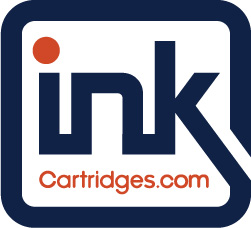Ask any business and you’ll find most agree that printer consumables don’t seem to be getting any cheaper. According to Canon USA, the average office employee prints about 60 pages per day or 12,000 sheets per year. At a printing cost that typically varies from 2-10 cents per page, the dollar signs can add up quickly. In today’s world of smartphones, tablets, and reliable aftermarket cartridges there are many new opportunities to cut costs. In this short guide you’ll find tips on ways to print less and even better ways to avoid printing all together.
PRINT SMART
Preview before you print. Busy employees are often in such a rush to print they forget to pause and preview their document. Take a moment to adjust the margins, alter the font size and do a quick once over for spelling errors. It only take a couple extra minutes and will prevent you from having to print a second copy.
Print in black and white or grayscale. For documents that don’t require color graphics, take advantage of your printer’s gray scale settings and print solely in black and white. You can select the “print in grayscale” option in Microsoft Word by going to the advanced printer settings in the print menu. Printing in grayscale only draws ink from your black cartridge. This simple adjustment allows color cartridges to take a break and avoids using up unnecessary ink.
Print in draft mode. For documents that aren’t presentation worthy consider printing in draft mode. Another option that is found in your printer’s advanced settings menu, draft mode uses up to 50% less ink and is perfect for emails or disposable office memos.
Print double sided. Save a bundle on paper when you use your printers double sided or “duplex” printing option. Ideal for printing out lengthy reports or manuals, you can find this option in your printer’s advanced setting options.
Choose your paper wisely. Not all paper is created equal, be intentional with the paper that goes into your printer! Printer paper is graded according to four different criteria: brightness, opacity, weight and texture. For inexpensive, disposable print outs it’s best to go with a lower end multi-purpose copy paper. For high end print jobs, you might consider a more expensive inkjet or laserjet paper.
1. Brightness: Paper brightness refers to how reflective the paper is in the light. A lower grade brightness will have a lower reflection rate, giving an off-white appearance to the page. The lowest grade brightness available for commercial copy paper is grade of 80, while the highest is a 100. The higher the grade, the better and brighter the paper. An average copy paper has a brightness of 92.
2. Opacity: Opacity refers to the degree in which light passes through the paper. A cheaper paper will be more translucent when held up to the light. Paper with a low opacity may present a problem for double sided printing due to text bleeding through to the other side of the page. Consider what you’re printing and only use a low opacity grade paper for casual print jobs.
3. Weight: The weight refers to how heavy the paper is. Although most do not think twice about how heavy a particular page is in their hand, it is widely considered that the heavier the paper, the higher the quality of the document. There is a significant difference in the feeling of an important business document printed on a high end heavy paper versus a low cost lightweight grade. A paper with a lighter weight gives off a feeling of cheapness and disposability. Keep in mind the heavier the page, the more expensive it is to mail as well!
4. Texture: Texture refers to how smooth the paper feels. A paper with a smooth, sleek appearance gives off a professional look. Smoother textured papers are suitable for inkjet and laser printers. While paper with a grainier texture is best for invitations.
Consider the cost per page. Cost per page is a very important factor to consider when breaking down overall printing costs. It varies significantly depending on the style of printer, the type of document that is printed and how often the machine is used. In most cases, the cheaper the printer, the more expensive the ink. Printer manufacturers will often sell their printers at a loss but make up for it in the price of ink. A printer’s page yield is the average amount of prints a customer should get from the cartridge. Page yields are based on industry standards and most printer manufacturers include the yield on the cartridge box. The best way to determine the average cost per page is to take the price of the cartridge and divide it by the page yield. For example, a genuine HP63XL high yield black ink cartridge costs $39.89 and has a page yield of 480. After doing a little math, the cost is around 8 cents per page. On the flip side, you can purchase a genuine Brother LC3035 high yield black cartridge for $55.99 with a page yield of 6,000. The cost for the Brother cartridge would be around .9 cents per page. As you can see, the cost per page can vary widely depending on what machine you have. Definitely take the time to do research and some comparison shopping before jumping on a great printer sale because you will probably be making up for it in the cost of ink.
Buy remanufactured or compatible ink. An even better way to save money on ink is to switch to compatible or remanufactured ink cartridges. Remanufactured and compatible cartridges are sold for a fraction of the cost of the original. However, not all aftermarket cartridges are the same. Make sure you buy from a reputable source that is supported by strong customer reviews. Our aftermarket cartridges are backed by a lifetime warranty and are guaranteed to work just as well as the original. The savings you can gain by switching to a remanufactured cartridge is significant. A remanufactured HP63XL black ink cartridge has an identical page yield to the original and sells for 29.99, making the cost 6 cents per page. The compatible LC3035 black ink cartridge sells for $23.99 with a cost per page of .3 cents. That is a huge savings!
GET THE ENTIRE OFFICE ONBOARD
Collaborate. In the age of smart phones and tablets it’s easier than ever to cut back on unnecessary print jobs. There are a number of apps and shareable programs like Microsoft OneDrive, Google Docs and Dropbox that allow you to collaborate online with your coworkers and avoid printing all together. Instead of printing out the agenda for your next meeting, send an email with a digital copy so coworkers can follow along on their laptop or tablet. Need to have a coworker make changes to a business plan? Share the document in GoogleDocs and they can make live changes directly on their computer. Apps like MileIQ and Concur can help calculate travel expenses and can easily collate travel time and cost all on the convenience of your smart phone. Your office might also consider looking into online banking to handle finances or offer a direct deposit option for employees. Not having to print out checks every month will definitely cut down on paper and ink!
Two printers are cheaper than one. Depending on the sort of printing your office does it may be cheaper to invest in two printers. Buy a monochrome laser jet to do the heavy lifting like printing out business contracts or legal documents. For photos or media files, purchase a color inkjet printer. Having the ability to swap between the two depending on the print job will end up saving you a lot of money in the long term.
Practice preventative copier maintenance. Routinely run printhead cleanings on your machine and regularly get your printers serviced to ensure they are performing at an optimal level. Disposable electronics are commonplace nowadays and a lot of consumers don’t take the time to take care of what they have. With a little bit of love, a heavy duty laser printer can last a very long time.
Create a culture of recycling. Recycle, reduce and reuse! Encourage employees to recycle outdated files instead of tossing them in the trash. Reuse old pages for taking notes in meetings or for printing out minor documents. Don’t limit your recycling to just copy paper. Consider recycling notebook paper, envelopes, file folders and stationary as well!
Reevaluating your company’s printer policies may take a bit of time but the pay off in your pocketbook makes it all worth it. Even incorporating just a couple of these tips should reduce consumable costs considerably. Post a sign near each printer with a few friendly reminders on how to print smart. Introduce employees to new collaborative apps and programs that will make their job easier. Provide recycling bins throughout the office so recycling becomes second nature. Eventually employees will get on board and you’ll be well on your way to becoming an office that’s proud of its print savvy expertise!
*Savings based on price comparison between remanufactured/compatible cartridge prices on www.inkcartridges.com and OEM cartridge and printer prices from the listed retailers: Staples. All products are reviewed independently. All prices effective as of July 28, 2021. OEM names are registered trademarks of their respective owners and are not affiliated with, and do not endorse InkCartridges.com. The images on this page are not owned by InkCartridges.com and are used solely to illustrate concepts discussed in the article. Please click on the images to see their original sources.





[…] If you print 5,000 copies a month it wouldn’t make sense to invest in a printer that only handles a 1,000. Read up on the statistics of each machine you are considering and buy one that makes sense for your needs. If you only print a few times a day your monthly print volume shouldn’t be a concern but you should still pay attention to your cartridge’s page yield. […]
[…] Duty-Cycle – A duty cycle is the number of pages a printer can print within a given month without any issues. Businesses use this number as a way to keep track of performance and to gage when a particular part might go bad. Replaceable parts like a drum or fuser assembly will wear out over time and can be expensive to maintain. Keeping tabs on wear and tear will keep your printer running smoothly for a longer period of time and ensure you are getting the most from the machine. Consumers that routinely print at a high volume should pay attention to their printer’s monthly print volume, or the number of pages a user requires from their printer. If you print 5,000 copies a month it wouldn’t make sense to invest in a printer that only handles a 1,000. Read up on the statistics of each machine you are considering and buy one that makes sense for your needs. If you only print a few times a day your monthly print volume shouldn’t be a concern but you should still pay attention to your cartridge’s page yield. […]